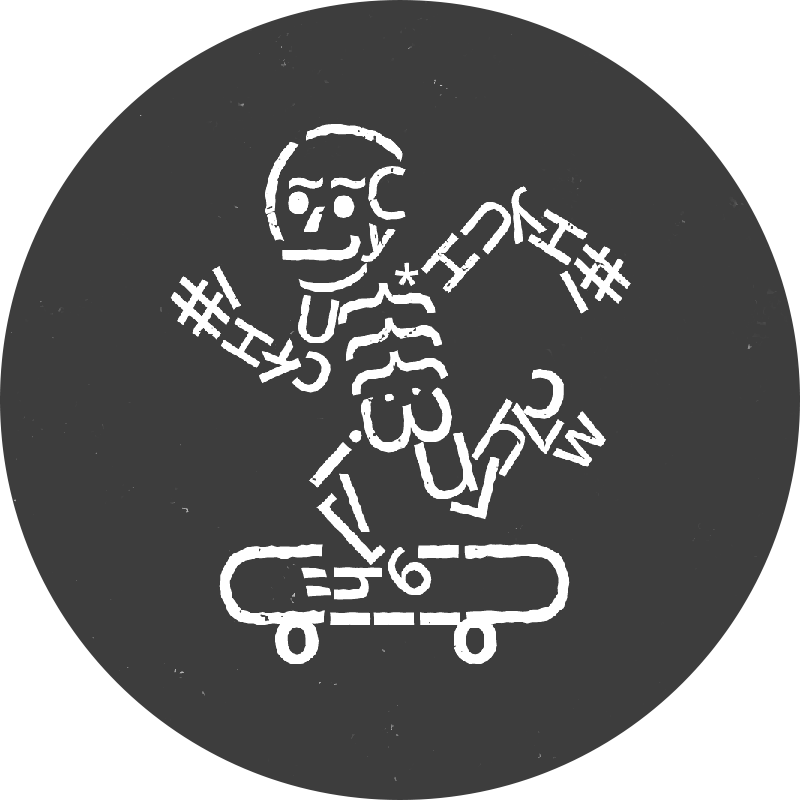This project requires Node.js >= 12 and yarn.
To get started, run the following commands from the root of the repo:
yarn installyarn fontdata- this will generate data files for the fonts insrc/fontsyarn start- this will start the local development server, view at http://localhost:8080.
The site will automatically be re-built and deployed on Github Pages every time the master branch is updated.
Specimen Skeleton uses external tooling from Specimen Skeleton Support, so we can add or update features without you having to update your specimen!
Specimen Skeleton is an Eleventy-based specimen boilerplate. It helps you get a basic site up and running quickly, and offers you a few interactive elements to build your demos from.
It will analyse your variable font and generate the CSS necessary and all the sliders, so you'll hit the ground running!
A full-blown specimen generator like Specimen Tools. We did some groundwork, but it's up to you to build the site!
- Put your WOFF2 fonts in
src/fontsand runyarn fontdata. - Configure the site in
src/_data/site.js. - In JavaScript, respond to fail/success of loading the font in the
FontFaceObservercode. - In HTML/CSS, use the
.variable-supportelement to communicate when variable fonts aren't supported. - Start/stop heavy animations by using the
.am-i-in-viewand.in-viewclasses.
You have two variables at your disposal, which will be generated when you run yarn fontdata. See the templates for some example on how to use them.
The fontdata variable containsall metadata from _data/fontdata.json. This file contains a list of all the fonts found in src/fonts, and offers the following variables per font:
name, containing the font name (e.g. Bungee Regular)
selector, the CSS selector to apply the font (e.g. bungee-regular)
style, the suggested style of this font (e.g. regular)
You can change the order of these fonts, so the font family tree makes sense when you loop over them in the specimen (e.g. light weights first, bold weights last). You can also rename the suggested style, which Specimen Skeleton tries to derive from the tfilename. You shouldn't change the selector though — this is used to apply the font in CSS, and to pick fonts from the fonts variable.
You can specify which font is the "main" font (usually the "regular" style), by assigning its ID to the main_id variable. Note that counting starts at 0!
The Specimen Skeleton loops over all fonts, and presents an object for each font with all data from the relevant src/_data files. This font variable contains its charset, variable axes and variable instances. You can address these by their selector from the fontdata variable:
{{ fonts["bungee-regular"].charset }}
In HTML, to use an image from your img directory, use the following URL value with the relative path to your image:
<img src="{% webpackAssetPath '../img/my_logo.svg' %}">
If you want to inline an SVG image, use:
{% include '../img/my_logo.svg' %}
or
{% webpackAssetContents 'img/my_logo.svg' %}
In CSS, point to the file using the path relative to your CSS file:
background-image: url(../img/my_logo.svg);
In CSS, images below 8 KB will be inlined automatically. To force inlined or external, append ?inline or ?external respectively, e.g. url(../img/my_logo.svg?external);. Inlining in HTML files
The boilerplate has some very basic components you can base your specimen site on:
Basic setup to have interactive axis sliders, as well as a dropdown with named instances. All elements with the class .interactive-controls-text inside the parent container .interactive-controls will respond to changes.
Simple grid to show all characters in the font. On hover, the character will be shown in a separate div.
Simple example to stop CPU-melting animations when they're not in the viewport. Elements with the class .am-i-in-view will get a class .in-view when they're in the viewport, and have that class removed when they leave the viewport. Use this to start/stop heavy animations.
Note: this can be repurposed for lazy loading images, pausing video, etc.
- Fraunces specimen site
- Arapey specimen site
- Specimen Builder by Mark Boulton (demo)
